If you’ve ever been in the Deep South on a sweltering summer day when the air feels heavy enough that you could swim through it, then you can probably appreciate locales that have low relative humidity.
It’s not your imagination. The air does feel hotter when humidities are high and more pleasant when they are low. This is because as we sweat, our bodies rely on air to evaporate the sweat and cool our skin. But high humidity means more water vapor is in the air, and our skin won’t dry as quickly, making us feel hotter.
So what are the 10 least humid states in the U.S.? Read on to find out.

10: Oklahoma (64%)
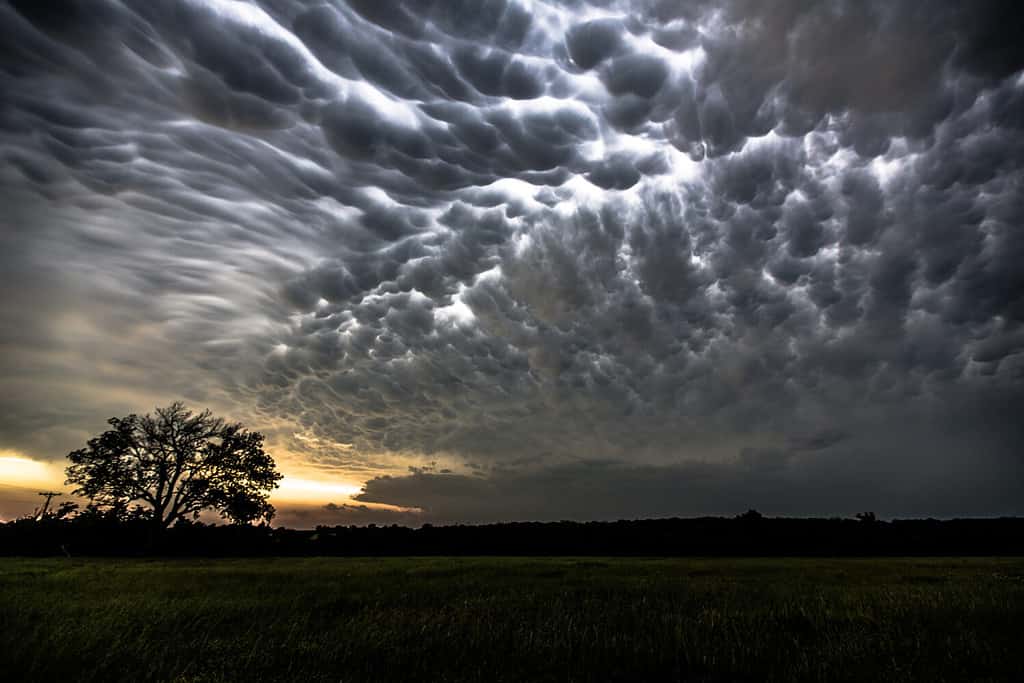
Oklahoma weather can be volatile. Storm clouds are seen gathering here before a tornado-spawning storm occurred.
©Cammie Czuchnicki/Shutterstock.com
Oklahoma, located in the south-central part of the U.S., has a varied climate, and while the eastern part of the state is considered humid subtropical, the western panhandle is much drier. The overall relative humidity for the state is 64%, making it the tenth least humid state in the country.
Summers are hot, with more extreme heat occurring in western Oklahoma. Warm, moist air traveling from the Gulf of Mexico influences the state’s climate, particularly in the southern and eastern regions. Around 30 to 40 days per year are at or above 100 degrees Fahrenheit in the western panhandle. Although the east has cooler temperatures, the higher humidity increases the heat index.
9: Idaho (62.4%)
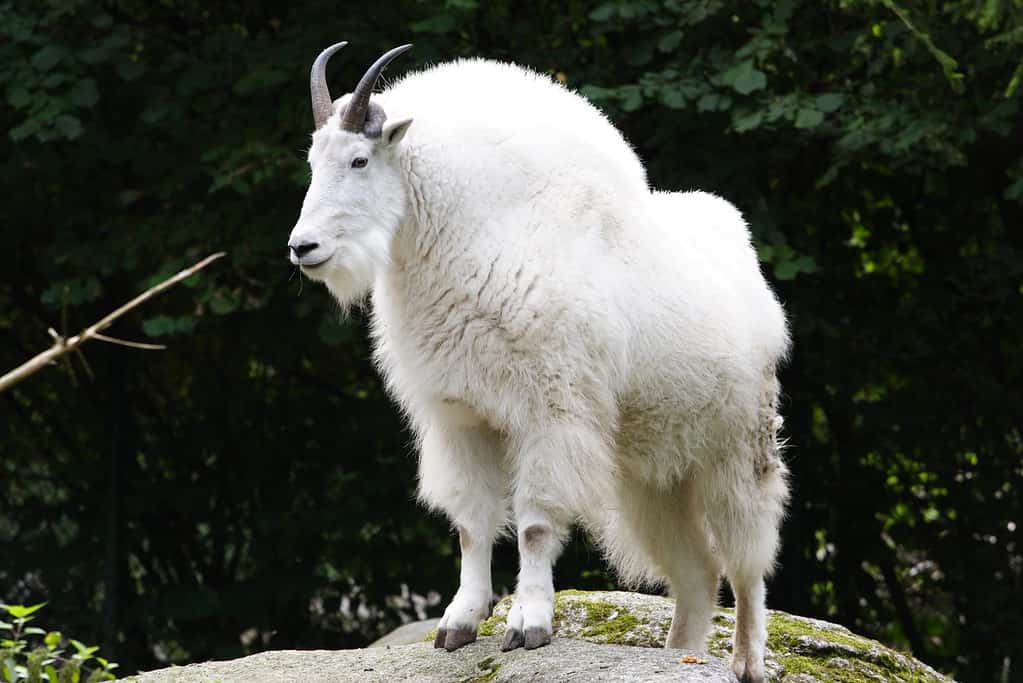
The unique Rocky Mountain goat can be found all over Idaho, mainly in high-altitude areas.
©Robert Asenjo/Shutterstock.com
The Pacific Northwest is known for its natural scenic beauty, and Idaho is no exception. Idaho is a large state with diverse topography and varied climate, including arid deserts, towering mountains, and plenty of streams, rivers, and lakes. Idaho’s climate varies as well across the state. As the elevations increase in the mountains, temperatures drop and receive more precipitation.
Lower elevations have higher temperatures and drier conditions. The region around Boise, located in the Snake River Valley, is particularly dry. The semi-arid climate produces an average of only eleven inches or more of rain per year. On average, winters are more humid at 75%, with July the least (36%).
8: California (61%)
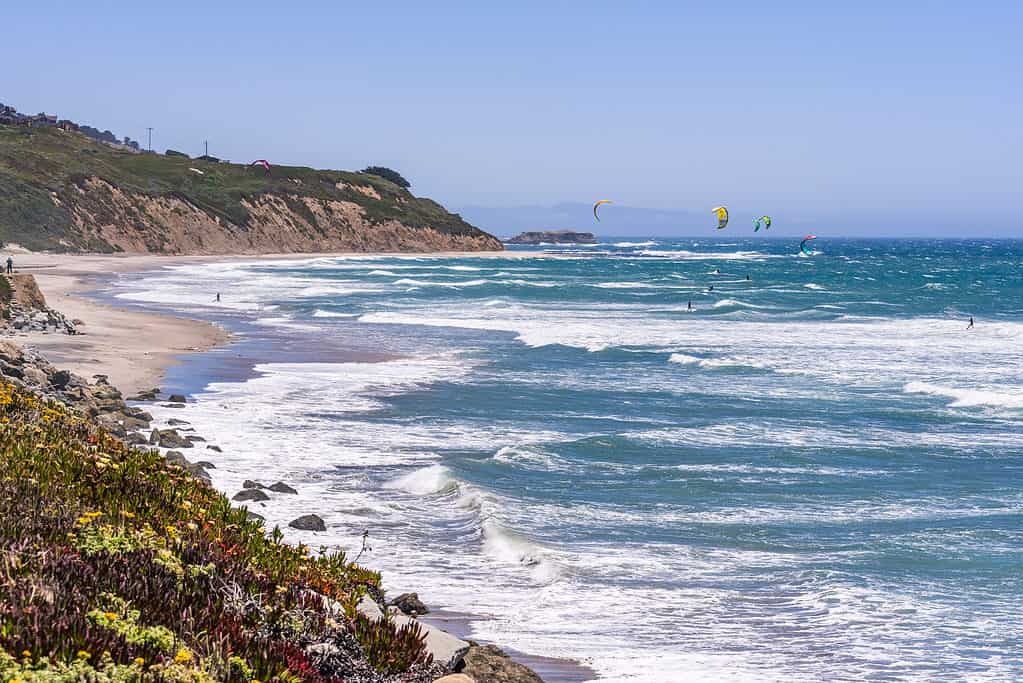
The Pacific Ocean heavily influences the climate of California.
©iStock.com/Sundry Photography
California is an immense state where the climate varies widely based on location and elevation, although most of the region is considered a Mediterranean climate. California is home to coastal regions, agricultural valleys, vast pine forests, mountain ranges, and arid deserts. The Pacific Ocean brings warmer temperatures in winter and cooler weather in summer along coastal areas.
Although California can get humid, the state has three major deserts: the Mojave Desert, the Colorado Desert, and the Great Basin Desert. These arid regions contribute to the overall relative humidity levels of California, making it the eighth least humid state.
7: Montana (60.4%)
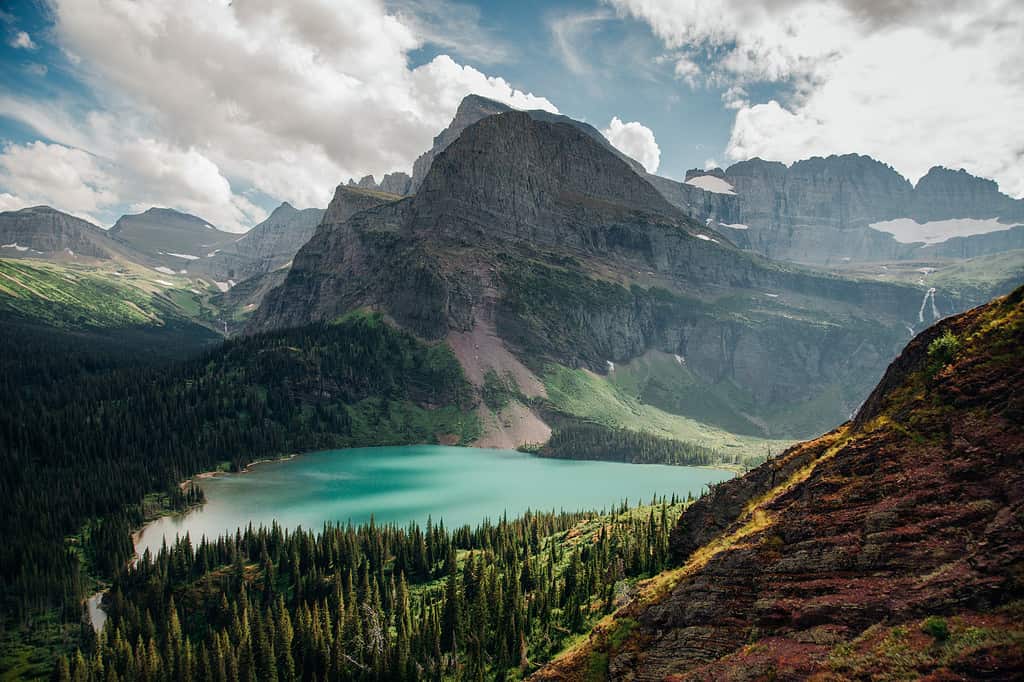
A breathtaking view of Grinnell Glacier at Glacier National Park, Montana.
©iStock.com/JeanMarieBiele
Montana is known for its breathtaking National Parks, open plains, majestic mountains, and rich natural resources, including gold, copper, and silver. The state’s relative humidity of 60.4% makes it the seventh least humid state in the country. However, temperatures and humidity levels vary based on region.
Summer months can get hot and dry, contributing to the state’s forest fires. Montana tends to have more humid winters and drier summers. The drier summers make it a pleasant atmosphere, although the wetter winters can be frigid and snowy.
6: Wyoming (57.1%)
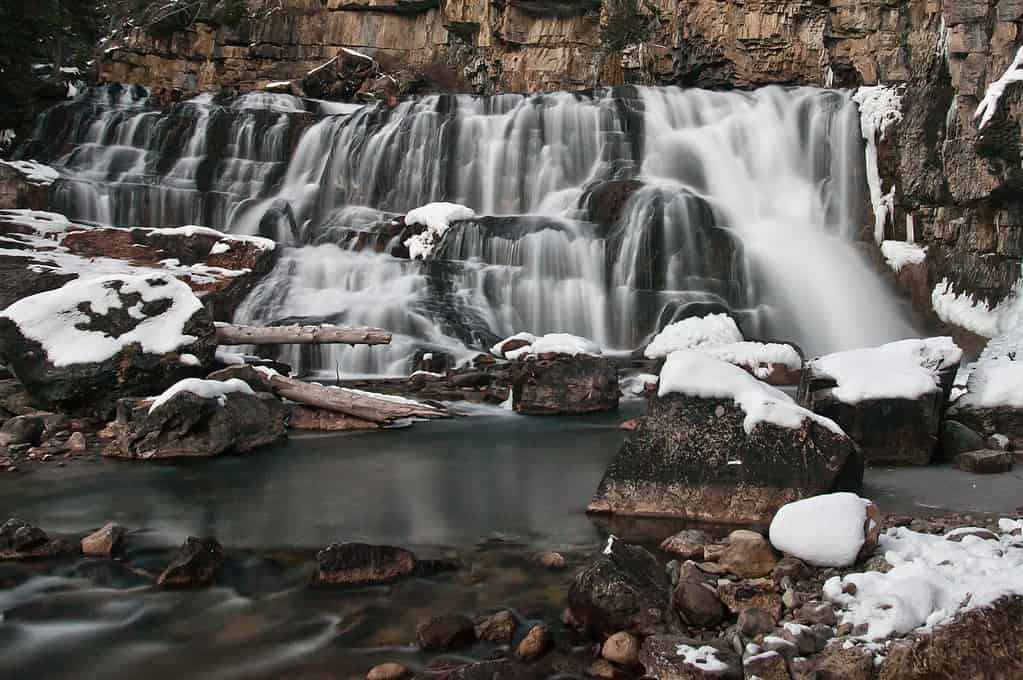
The stunning Granite Falls are located in the Bridger-Teton National Forest in Wyoming.
©Jeff Bernhard/Shutterstock.com
People looking for natural beauty, low population density, and lots of outdoor recreational activities should look to Wyoming. It’s the tenth-largest state by area but the least populated. With a population of under 600,000 and an area of nearly 100,000 square miles, Wyoming has an abundance of natural resources and wildlife. Nearly half the land is owned by the U.S. government, including Grand Teton and Yellowstone National Parks.
The western portion of Wyoming contains the Rocky Mountains, while the eastern region is made up of the High Plains. The climate of Wyoming ranges from humid in the northeast to semi-arid in the southwest. Summers are warm but not too hot, averaging into the 80s and 90s for highs. Summer months tend to be drier, while winter months are wet and snowy.
5: Colorado (54.1%)
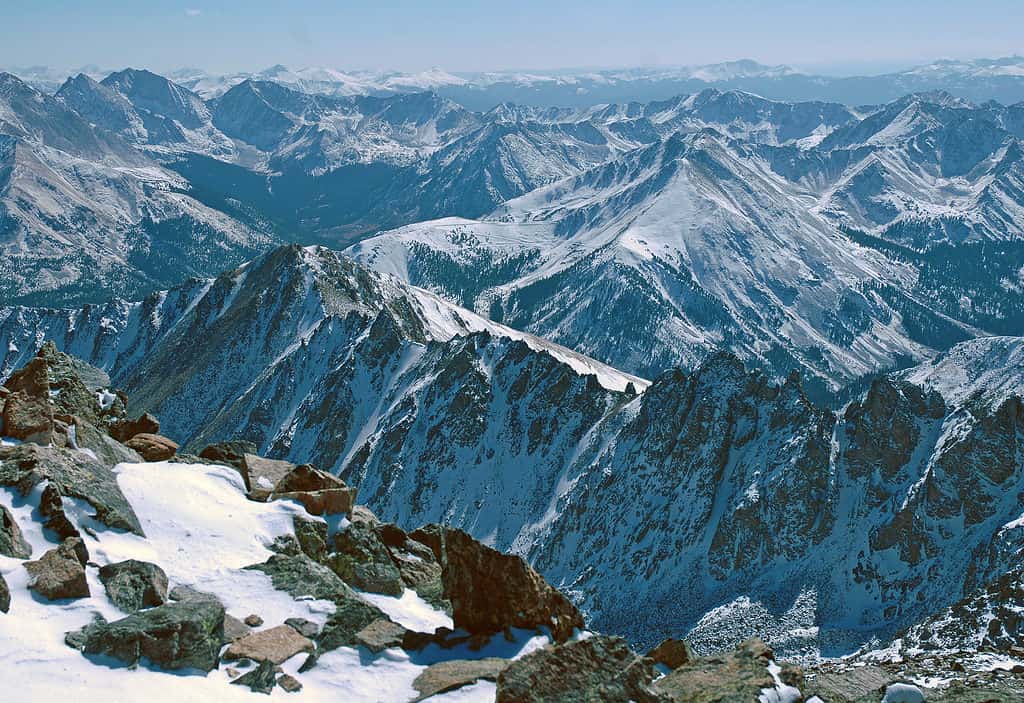
A source of recreation, and home to diverse wildlife, the Rocky Mountains have a profound effect on Colorado’s climate.
©Nyker/Shutterstock.com
Coming in fifth place in relative humidity, Colorado boasts pleasant humidity levels. It’s another western state known for its majestic mountains, vast pine forests, and sweeping beauty. The largest cities in the state, Denver and Colorado Springs tend to experience mild winters, hot summers, and plenty of sunny days.
The climate of Colorado varies across the state and is influenced by the mountain ranges. Wide variations in weather can occur as you travel up the mountains. For example, the summit of Pikes Peak can be about 30 degrees cooler than the depot in Manitou Springs.
4: Utah (51.7%)
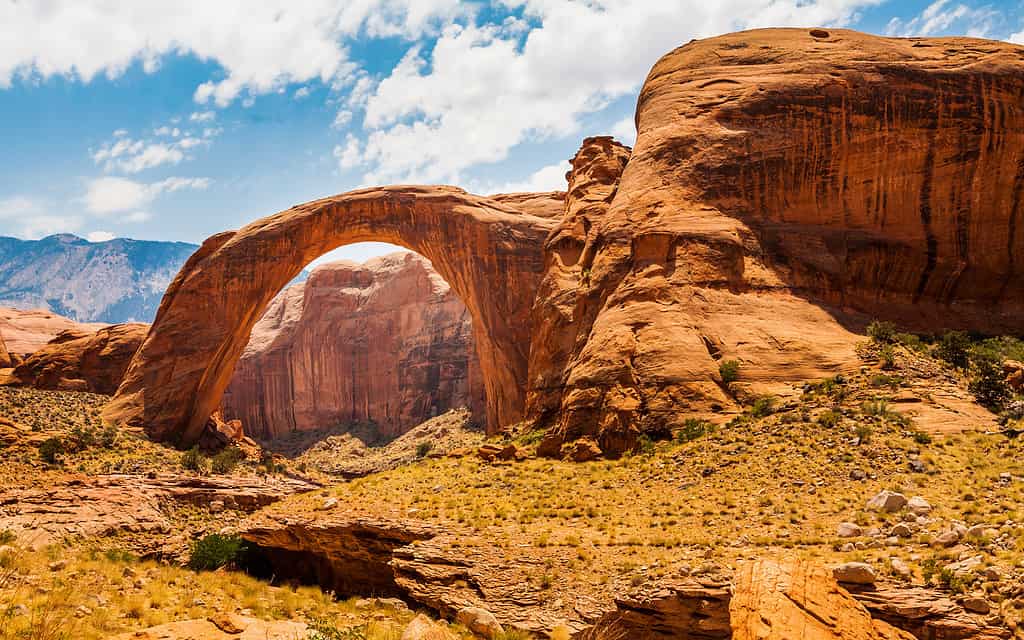
Amazing rock formations can be found in Utah.
©iStock.com/Alysta
Utah has spectacular natural beauty and is home to five national parks: Zion, Canyonlands, Bryce Canyon, Capitol Reef, and Arches. Utah is known for its unique rock formations, recreational activities, and diverse geography. Within Utah, you can find deserts, extensive pine forests, picturesque canyons, wetlands, and towering mountains.
Summers tend to run dry, while the relative humidity in the winter is higher, bringing snowy conditions. Temperatures can vary across the state with the higher elevations bringing cooler weather. Overall, the state gets plenty of sunny days and low relative humidity.
3: New Mexico (45.9%)

One of the
oldest cities
in the United States, Santa Fe has a desert climate with plenty of sunshine.
©iStock.com/Sean Pavone
In the southwest, New Mexico boasts a low overall relative humidity, coming in third in the nation. It’s the fifth-largest state containing a wide diversity of landscapes. Depending on where you are in Utah, you may find snow-capped mountains, arid deserts, dense forests, grasslands, or stunning mesas.
The climate is mild and ranges from arid to semi-arid. Besides low humidity levels, New Mexico has abundant sunshine and little rain. Summers can get hot at lower elevations, often over 100 degrees Fareighnheit. However, nights tend to cool quickly.
2: Arizona (38.5%)
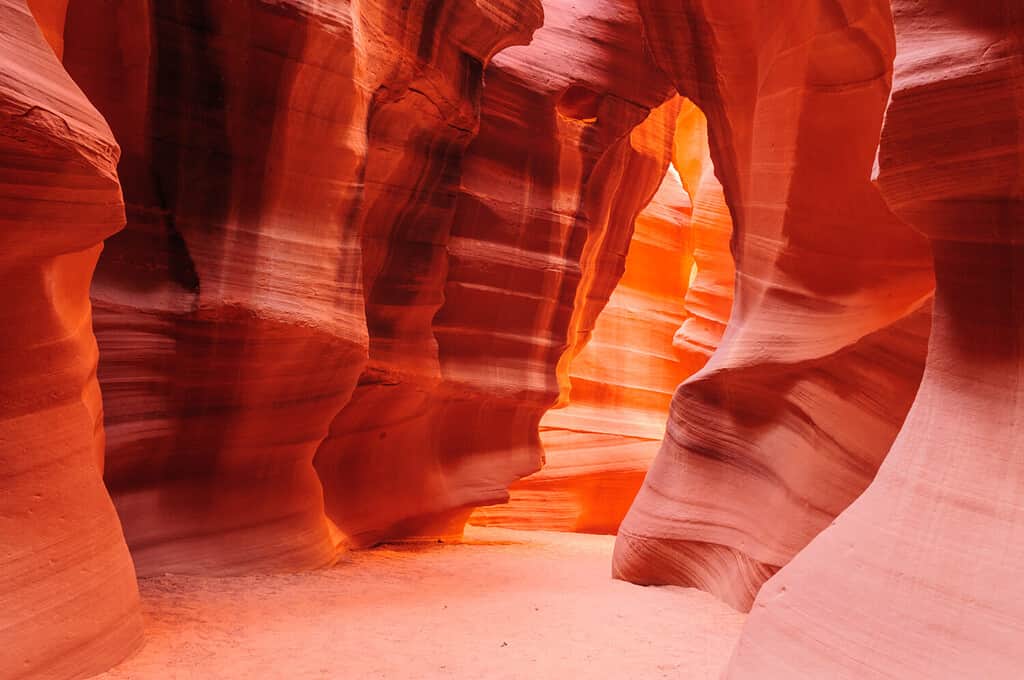
Arizona is home to stunning canyon formations. Seen here is
Antelope
Canyon in Navajo Tribal Park.
©Goldilock Project/Shutterstock.com
The desert landscape and limited water resources help to make Arizona one of the least humid states in the U.S. At an average relative humidity of 38.5%, Arizona comes in second in the country. Arizona receives 300 days per year of sunshine, relatively little rain, and an average temperature of 75 degrees Fahrenheit.
Although it’s a dry heat, summers can be scorching hot, with plenty of days that exceed 100 degrees Fahrenheit. The bustling city of Phoenix holds the state’s record for hottest day when the temperature hit 122 degrees Fahrenheit in June of 1990.
1: Nevada (38.3%)

Lake Tahoe, in the Sierra Nevada Mountains, between the border of California and Nevada is known for its beaches and ski resorts
©Madhu Gopal/Shutterstock.com
Finally, with an average relative humidity of 38.3%, Nevada tops the country as the least humid state. Although, it’s a close first place, with Arizona following not far behind at 38.5%. Nevada is home to the tourist hot spot, Las Vegas. However, most of Nevada is less populated and contains towering mountains, wide valleys, arid forests, marshlands, lakes, and rivers.
With a mostly arid climate, spring and fall in Nevada tend to be pleasant and sunny. Summers can get extreme, with average highs ranging in the 90s and 100s. However, summers are dry, and rainfall tends to be scarce. The temperatures can vary widely from north to south with winters in the southern part of the state tend to be milder and shorter than in the north.
Summary of the 10 Least Humid States
| Rank | State | Relative Humidity |
|---|---|---|
| 1 | Nevada | 38.3% |
| 2 | Arizona | 38.5% |
| 3 | New Mexico | 45.9% |
| 4 | Utah | 51.7% |
| 5 | Colorado | 54.1% |
| 6 | Wyoming | 57.1% |
| 7 | Montana | 60.4% |
| 8 | California | 61.0% |
| 9 | Idaho | 62.4% |
| 10 | Oklahoma | 64.0% |
Thank you for reading! Have some feedback for us? Contact the AZ Animals editorial team.








